story
An itinerary for Sophia
A tour of Sophia de Mello Breyner Andresen's favorite places
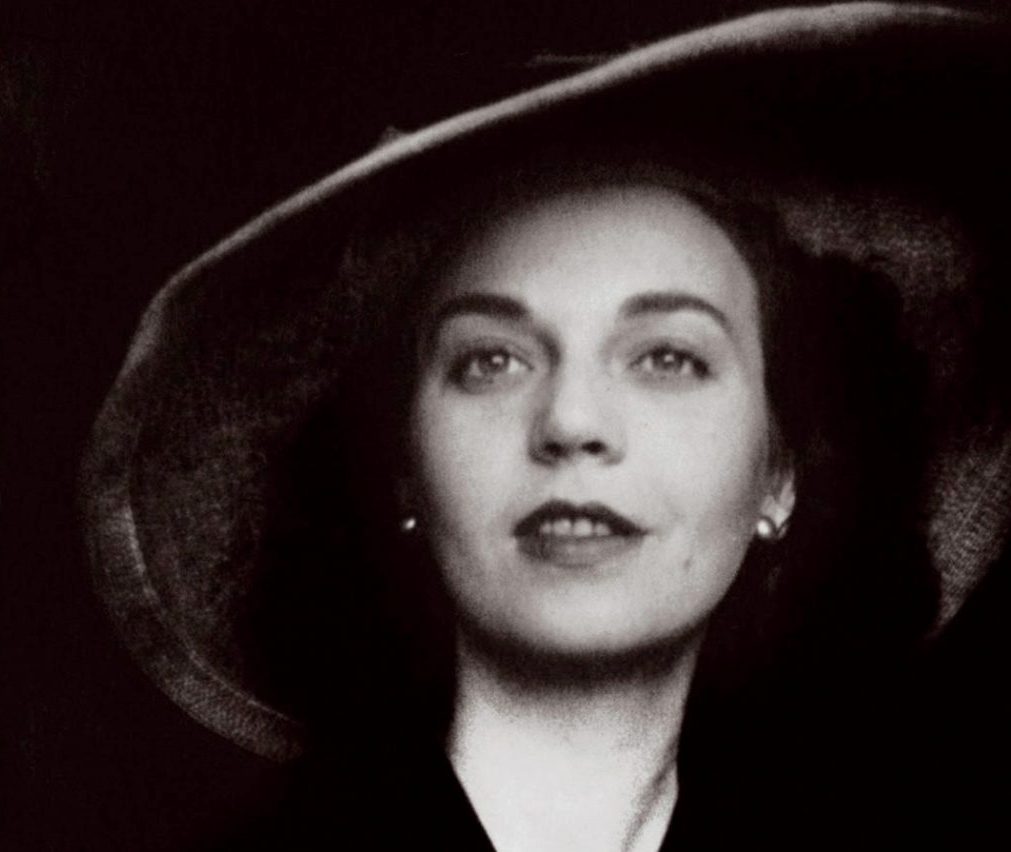
Sophia was one of the great names in the 20th century for Portuguese-language poetry, cultivating, according to António José Saraiva and Óscar Lopes, “In classical Mediterranean images, the identification of the eternal with human reality and its aspirations for justice”. The Lisbon itinerary in memory of the writer goes through six places in the neighborhood of Graça where she lived, crossing biographical data with references to her work. In the centenary of the birth of Sophia de Mello Breyner Andresen, her poetry remains alive confirming the verses: " (…) Even if I die the poem will find / A beach where to break the waves."
On the day that marks the 5th anniversary of Sophia de Mello Breyner Andresen’s death, one of the most beautiful panoramic viewpoints in Lisbon was named after her. A monument was erected at the location, a bust sculpture of Sophia, a replica of the original in bronze, carved in the 50s by António Duarte (1912-1998). Sophia very rarely talked about Lisbon in her poetry. Having an appreciation to great natural spaces – the sea, the mountains and the plains – she sometimes expressed her dislike for the life “enclosed” between the “walls of the houses and buildings” of the city. As in the rightly titled poem: “City”:
(…)
“Knowing that you take my life in you ,
And that you drag through the shadows of the walls,
My soul that was promised,
To the white waves and the green forests.“
On the monument, a plaque evokes one of those rare poems, titled “Lisbon”, which opens her book “Navigations”. In 1977, Sophia was invited to take part in the celebration of Camões Day in Macau. While flying over the East for the first time, she thought of the men who had arrived there 500 years before, not knowing what we know today.
“Theynavigated without the map theymade.”
The trip to Macao triggered a reflection on what it would have been like for Portuguese sailors to reach the brave new world: all the colors being revealed, the smells, sounds – all the amazement and the vertigo of finding that distant and fascinating reality.
Lisbon thus emerges as the symbolic starting point of the Age of Exploration, the familiar place that was left behind for the uncertainty of the new world. Lisbon was a great path to the sea.
(…)
“As the wide sea to the west expands
Lisbon oscillates like a big boat“
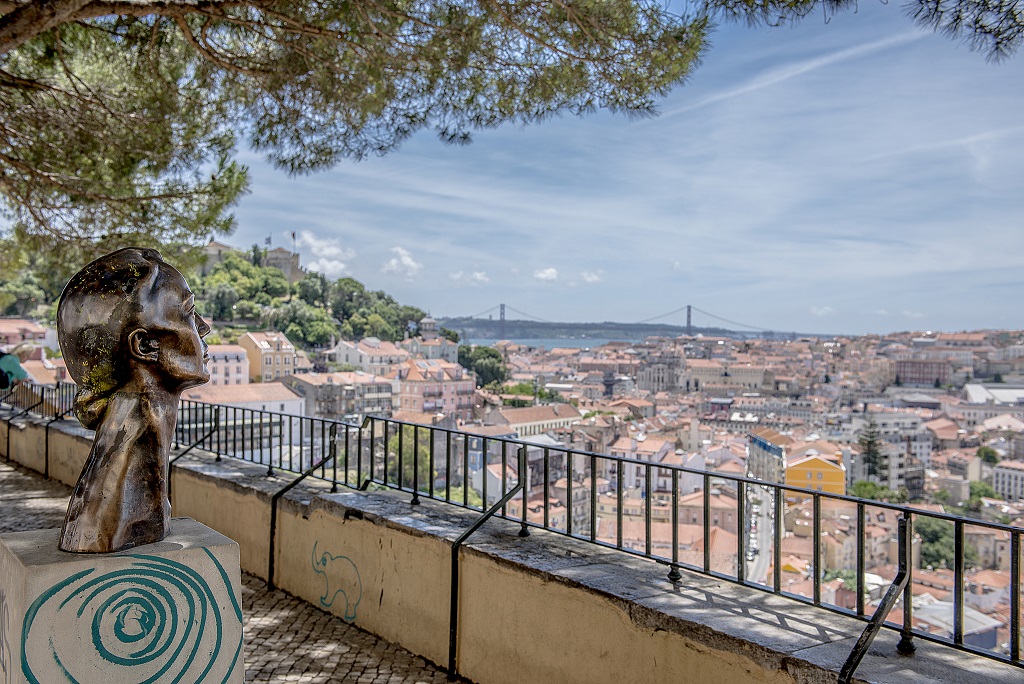
In the center of the garden, a bronze figurative statue by an unknown author, entitled “Mother and Son”, evokes the maternal relationship. Possibly influenced by “Flora” by Jean-Baptiste Carpeaux, a depiction of the goddess of flowers and spring. This statue with its winged figures suggests a Hellenistic representation related to Greek culture and ancient Greek mythology. It is therefore the ideal place to remember Sophia’s passionate relationship with Greece.
The first contact with the Greek civilization came when a very young Sophia discovered Homer. She was immediately dazzled by Greek things, by the Odyssey in particular, and immediately developed a strong attraction for the Greek deities. In her first books, “Day of the Sea” (1947) and “CoraI” (1950), she shows her fascination with Dionysus and Apollo, Greek gods representing the impulses of nature.
Sophia already loved Greece, and held a fascination for its sea, its islands, its light and colors. And in the 60s, she made contact with them physically. She first visited Greece in 1963 with Agustina Bessa Luís. Since then, whenever she could, she would return. She returned with friends, with her husband, with her children, and with her grandchildren, perhaps in search of “a divine and multiple conscience,” evoked in one of her “first Greek poems”: “Evohé Bakkhos.”.
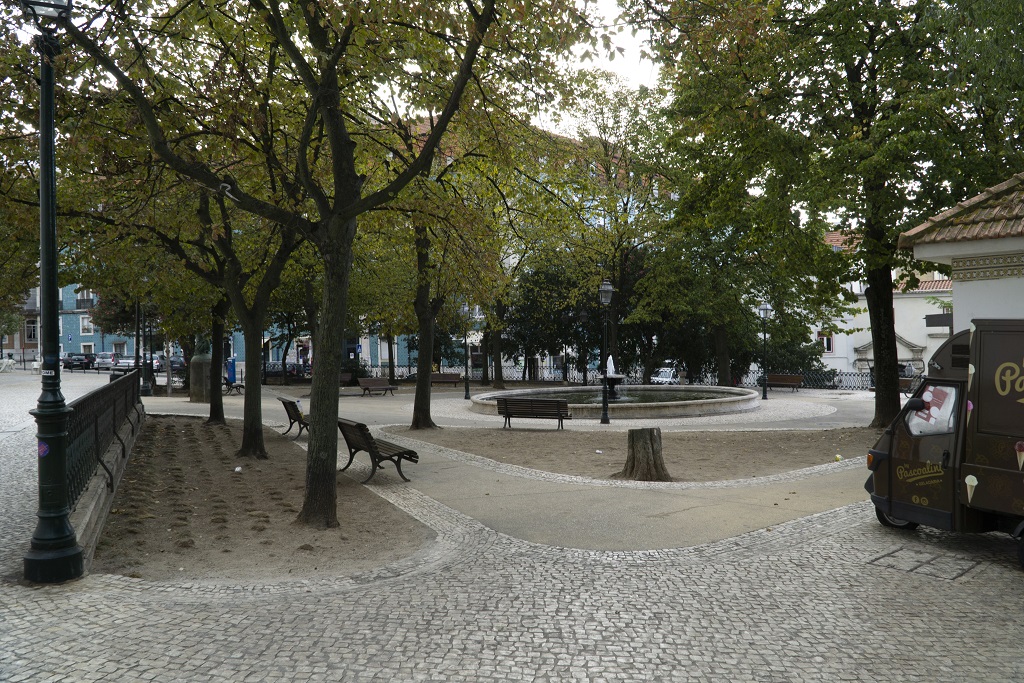
On November 27, 1946, Sophia married Francisco Sousa Tavares, in Porto. In 1951, Sophia, her husband, and their three children, moved to Lisbon and started living at number 57, 1st floor, in Travessa das Mónicas. Francisco ran for sub-inspector of labor at the Ministry of Corporations.
Once she was at home, she wrote a postcard to her mother:
“I am in a state of grace! I arrived today. I spent this week opening and unwrapping the things you sent me. They are so beautiful. They match the place so well. I have everything that I need! The house is beautiful! (…)”
In the poem “The Houses”,she writes:
“There is always a fantastic god in the houses
Where I live, and around my steps
I feel the great angels whose wings
contain all the wind of spaces.“
At Sophia’s house, there were always guests. Everything was a topic of discussion. Freedom was lived before it existed. Salazar starts to hear about Francisco Sousa Tavares, when his activism in the monarchical movement became more active.
In 1958, both gave their support to Humberto Delgado’s campaign, which results in the dismissal of Francisco Sousa Tavares from the civil service.
It is in the 1960s that the political struggle and indignation against the dictatorial regime is revealed in Sophia’s poetry. In the “Sixth Book” the most direct poems of criticism and opposition to the regime are present, one of them is: “Old vulture”, obviously addressed to Salazar:
“The old vulture is wise and smooths its feathers,
Rot pleases him and his speeches
have the gift of making souls smaller. “
This book led the Portuguese Writers Society to award Sophia the Poetry Grand Prix.
In the early 70’s, she would dedicate beautiful poems to Che Guevara and Catarina Eufémia (comparing the peasant girl from Alentejo to Antigone due to their search for justice). In the extraordinary poem titled “Camões and Tença”, she establishes a painful parallel between 16th century Portugal, which did not recognize its greatest poet, and the contemporary country:
(…)
“This country kills you slowly ;
The country you called and you don’t answer;
The country you name and are not born .”
(…)
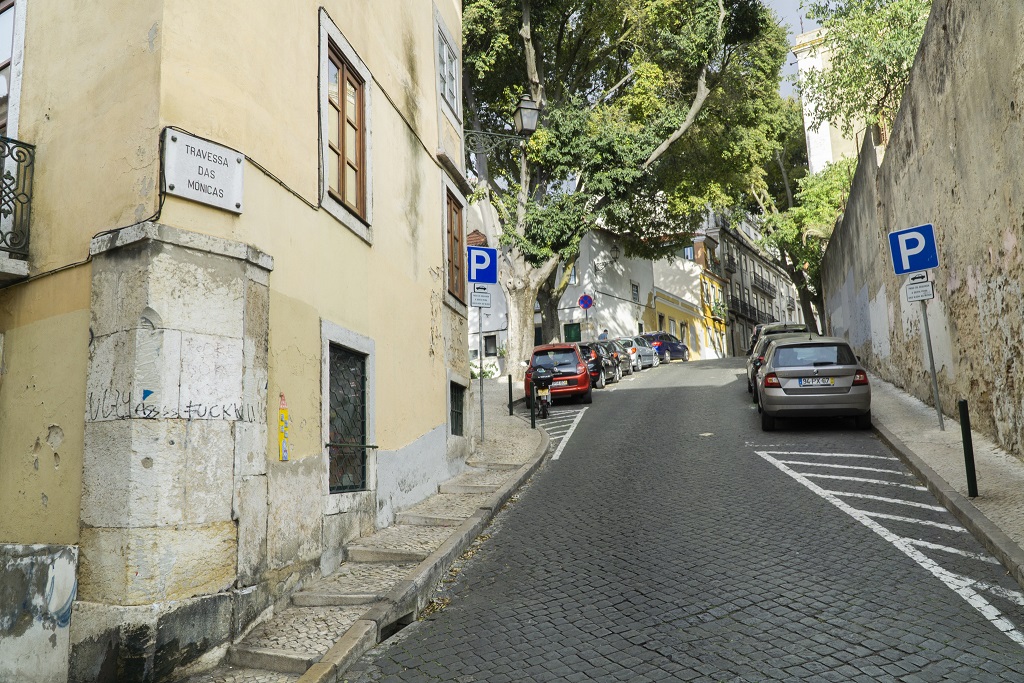
Next to the Panteão dos Bragança, we evoke Sophia’s aristocratic descent and relationship with her surroundings.
On the maternal side, her great-grandfather was Henry Burnay, of Belgian descent, and the 1st Earl of Burnay, a title granted by King Louis I. Her grandfather was Tomaz de Mello Breyner, the 4th Earl of Mafra, was appointed Royal Chamber Physician by King Carlos I. It is to him, who taught her how to memorize poems by Camões and Antero, that Sophia owes her true initiation into poetry.
Sophia was born in Porto, Rua António Cardoso. Very close, in Campo Alegre, her paternal grandparents’ house was a farm with a huge romantic garden with several greenhouses of exotic plants, numerous fruit trees and lakes. A “fabulous territory” where enchanted worlds easily emerged, is the origin of the stories that Sophia would write for children.
In 1962, when she published “Exemplary Tales”, some of these narratives were understood as fierce criticisms of the world to which Sophia belonged by birth and class. The tale “Monica’s Portrait” satirizes the National Women’s Movements, which constituted the support structure of Salazar’s regime. Shocked, some friends of Sophia even questioned her about this text: “How could you, even more since it is a world you know from the inside?” Sophia replied, “This world you speak of, which I know from the inside, has no inside, only outside.”
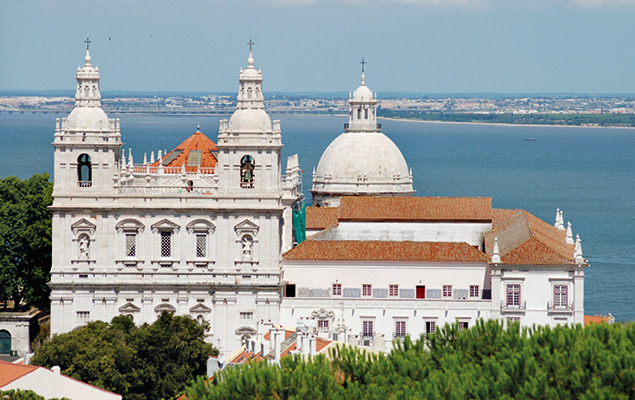
“When I die I will return to search for
the moments I didn’t live by the sea“
The wonderful view over the Tagus pouring out into the ocean is the starting point for the evocation of the sea as a convergence with Sophia’s poetry.
The first sea that emerged in Sophia’s life was the Atlantic. The sea of Granja beach, where Sophia spent an enchanting summer in a rather small house situated on the dunes right above the sea. She would go straight to the beach, and spend hours bathing in the natural pools that, at low tide, surfaced on the south side of the beach. Sophia wrote numerous poems in Granja:
“White house on the huge seafront,
With your garden of sand and sea flowers,
And your intact silence in which you sleep,
The miracle of things that were mine.“
As she wrote in Greece after discovering the intense blue of the sea and in the Algarve, on Dona Ana beach where the similarities with Greece were evident.
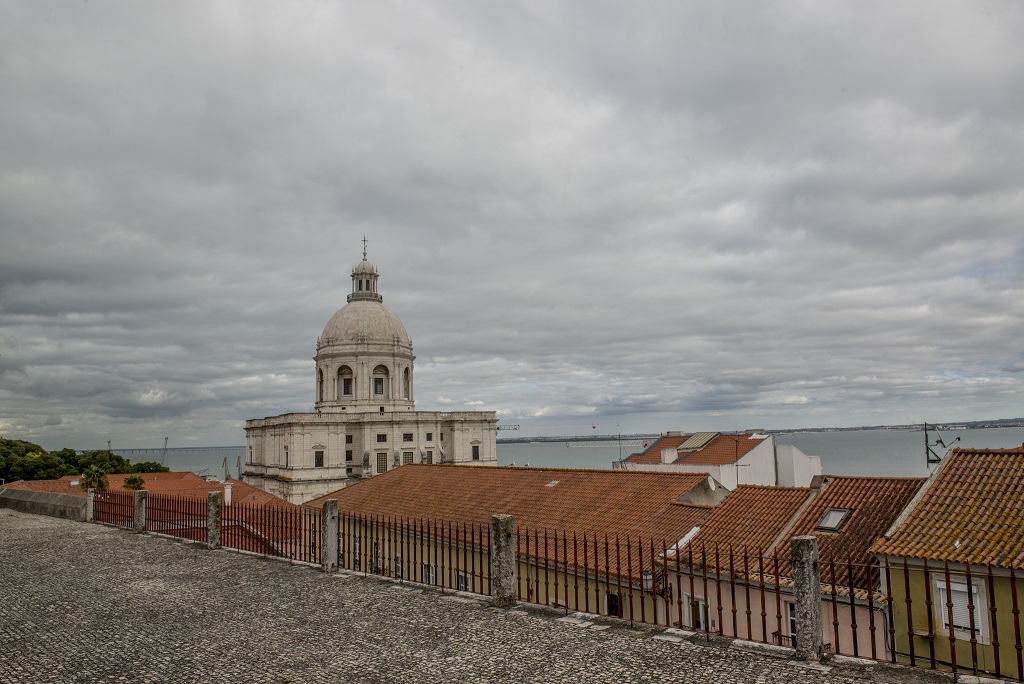
“This is the dawn I expected
All day a clean start,
Where we emerge from night and silence,
And free we inhabit the substance of time.”
In this poem, Sophia talks about the Carnation Revolution of April 25th, 1974, “The whole and clean initial day.” A few days later, on May 1st, thousands of protesters took to the streets. In a meeting at the Writers’ Association to prepare the demonstration and phrases for the parade, Sophia suggested “Poetry is on the street.” Maria Helena Vieira da Silva immortalized that phrase in a poster she painted.
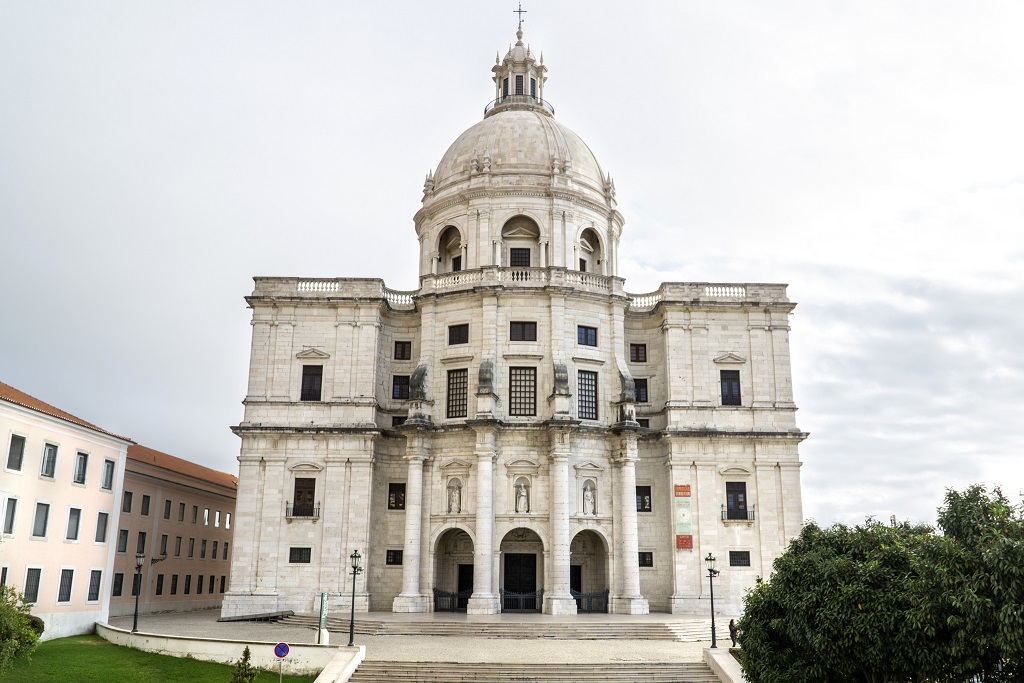
Sophia was a deputy for the Socialist Party in the Constituent Assembly and bequeathed us her most beautiful definition of socialism: “Socialism must be an Aristocracy for All,” a way for everyone to reach the same realms that only the aristocrats and the privileged accessed since it was the environment in which they were born.
Sophia died in Lisbon on July 2, 2004. She was moved to Panteão Nacional on the 10th anniversary of her death. She wrote in the poem “I Will Return”:
“I will return to the poem as the homeland to the house ,
Like the old childhood I lost out of carelessness
To obstinately seek the substance of everything
And scream with passion under a thousand lights.“